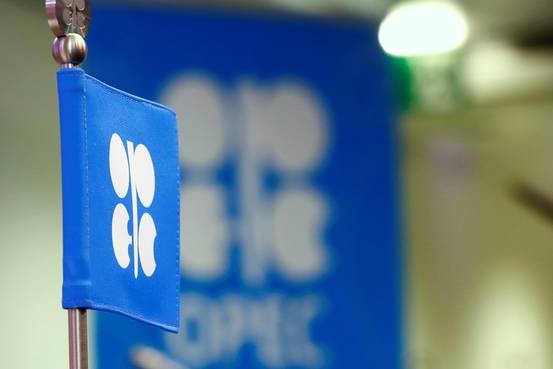OPEC's Houston Huddle Deepens Oil Cuts Dilemma

EghtesadOnline: OPEC ministers met with partners and rivals in Houston this week as they try to figure out whether to prolong production cuts. That decision only got harder.
At the CERAWeek conference in the Texas oil hub, representatives of the Organization of Petroleum Exporting Countries huddled both with Russia, its main ally in an effort to clear a global glut, and executives from the U.S. shale industry -- the group’s key competitor. Yet OPEC’s de-facto leader Saudi Arabia, which said in January that six months of output curbs would be enough, sounded less certain about what to do next, Bloomberg reported.

The data confronting OPEC is heightening its dilemma. Implementation of the agreed production cuts has largely exceeded expectations, but U.S. crude inventories are still rising from record levels and prices are stuck in the low $50s, suggesting more work needs to be done. At the same time, U.S. drillers are already roaring back and forecasters warn further price gains would only encourage them to swell the surplus.
“On the positive ledger, you’ve had core OPEC -- Saudi and the Gulf states -- compliance much better than we thought,” Jeff Currie, head of commodities research at Goldman Sachs Group Inc., said in a Bloomberg television interview. “On the negative ledger, particularly in the U.S., the supply response seems to be gaining momentum much faster than we thought.”
Oil analysts are split on whether the deal needs to be prolonged. Ed Morse, head of commodities research at Citigroup Inc., expects a continuation in order to bring about a sufficient reduction in fuel inventories. Societe Generale SA’s head of oil research, Mike Wittner, contends that OPEC will instead need to increase output in the second half of the year to meet demand.
Green Shoots
Saudi Arabian Energy Minister Khalid Al-Falih and his Russian counterpart Alexander Novak -- the principal architects of the December oil-cuts deal -- made an effort to present a united front. At a hastily arranged news conference on Tuesday they insisted the cuts are working and agreed it’s premature to say whether longer-lasting curbs are needed.
Al-Falih’s uncertainty over the duration of the cuts marked a subtle yet significant shift for the Saudis. He said in Davos, Switzerland in January that the deal could wind up after six months as was initially agreed. OPEC members Iraq and Angola signaled a willingness to extend the curbs to boost prices further. Producers will meet in Vienna in May to decide on the next steps.
Yet while Al-Falih noted that oil inventories aren’t draining as quickly as expected and pushed for stronger compliance with the December deal, he also insisted that he wouldn’t allow the cuts to serve as a booster for rivals.
“The green shoots in the U.S. are growing too fast,” Al-Falih said. “Saudi Arabia will not allow itself to be used by others” nor “bear the burden of free riders.”
Shale Wave
OPEC didn’t just meet with its collaborators at the Houston event: Secretary-General Mohammad Barkindo dined with about 20 U.S. shale executives from companies including Pioneer Natural Resources Co. and Hess Corp. for an off-record discussion of the industry.
Barkindo’s dining partners represent a different kind of competition, able to respond faster to price signals than traditional suppliers The latest data and forecasts show just how much these companies are doing to thwart OPEC’s efforts to clear the glut.
The International Energy Agency’s executive director Fatih Birol, also speaking in Houston, warned that a “second wave” of shale is looming as OPEC’s cuts revive prices just as drillers emerge more efficient and disciplined from the two-year slump. The agency doubled its estimates for supply growth outside OPEC in 2018 and said projections for U.S. shale could be boosted further.
Drilling in the U.S. has increased for 10 months, data from Baker Hughes Inc. show. That’s revived the nation’s crude output to the highest in a year -- more than 9 million barrels a day -- and pushed up crude inventories to record levels of more than 520 million, according to data from the Energy Information Administration.
A year ago, the previous Saudi oil minister Ali al-Naimi told CERAWeek that the kingdom wouldn’t cut its output to make way for American supplies. While supply trends could still shift by the next OPEC meeting in May, the latest data suggest the group’s policy is doing exactly that.
“Shale oil is going to make the life of some other producers very, very challenging,” the IEA’s Birol said.


